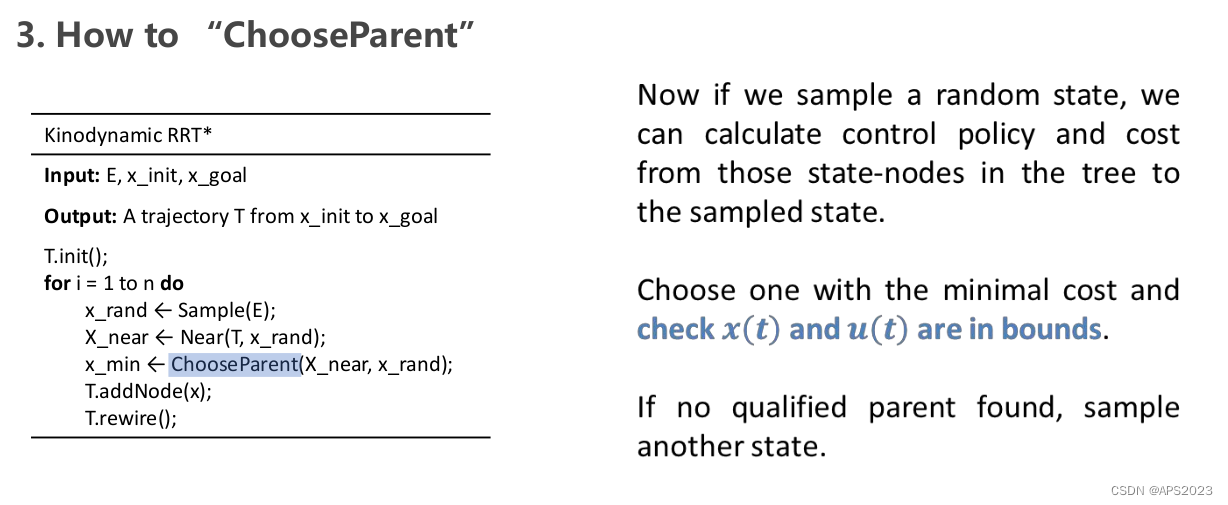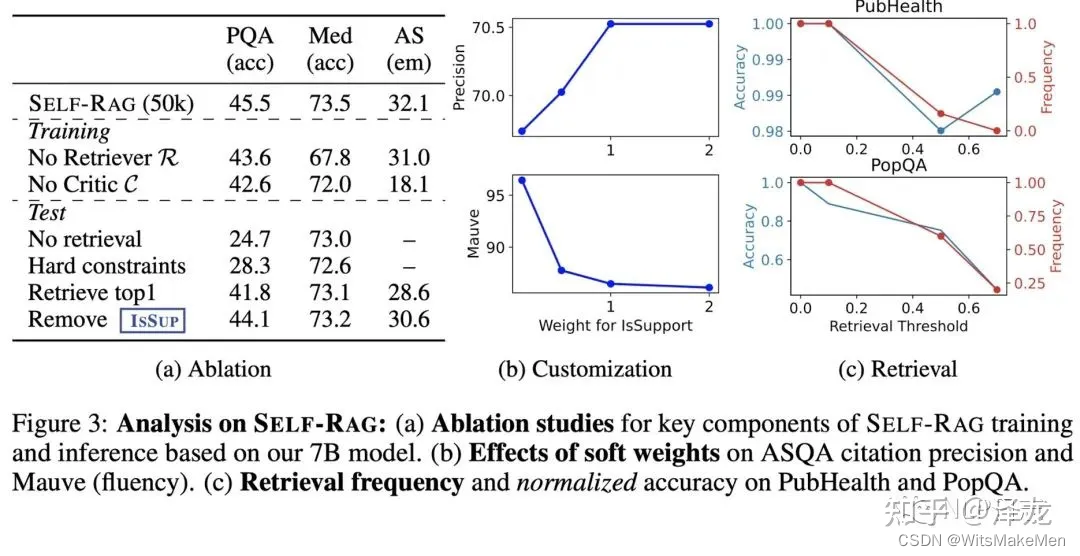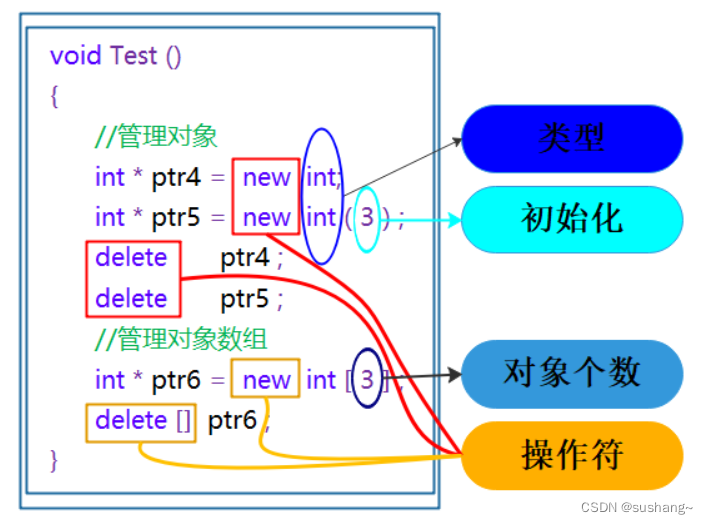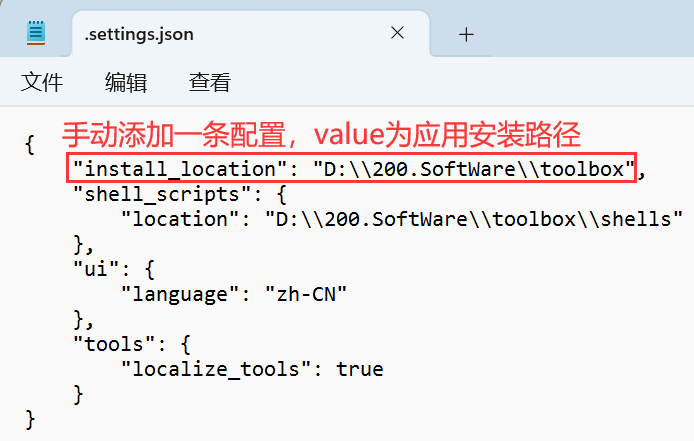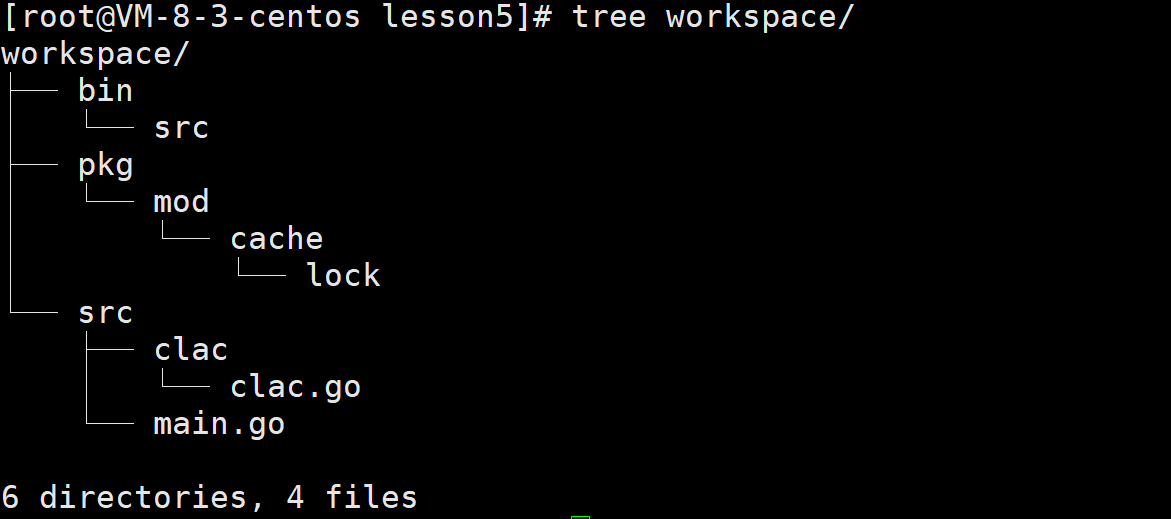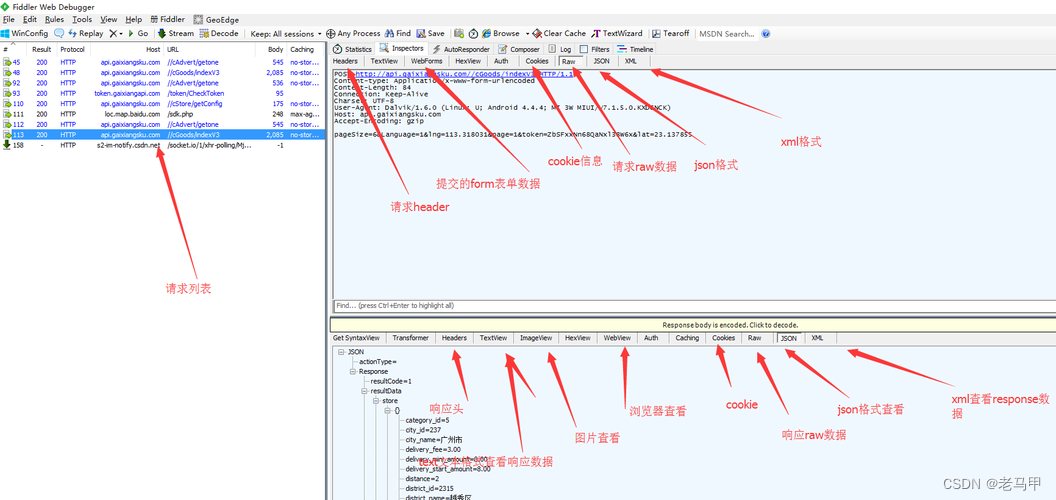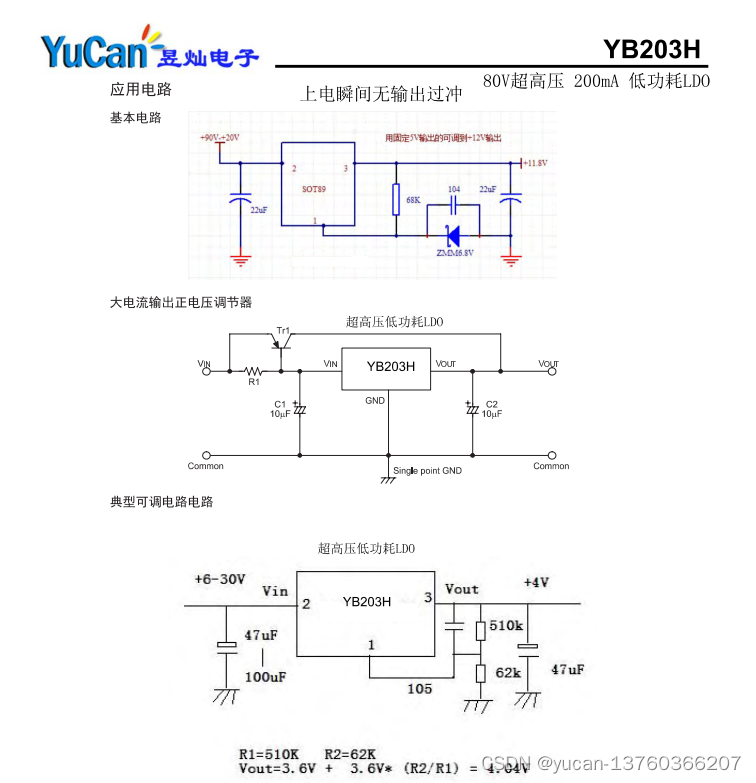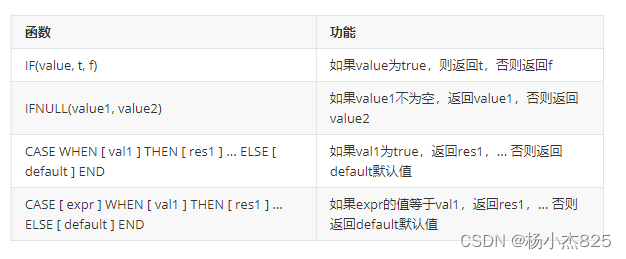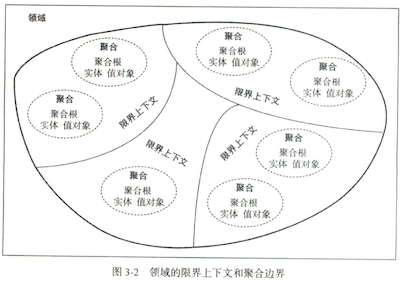C语言数据结构与算法
线性表
顺序表(静态分配内存)
#include <stdio.h>
#include <stdbool.h>
//静态顺序表
#define MAX_SIZE 8
//顺序表储存的数据类型
typedef int ElemType;
typedef struct {
ElemType data[MAX_SIZE];
int length;
}SeqList;
//初始化顺序表
void initSeqList(SeqList *L){
for (int i = 0; i < MAX_SIZE; i++) {
L->data[i] = 0; // 将数组中的所有元素初始化为0
}
L->length = 0; // 将顺序表的长度初始化为0
}
//数组创建顺序表
bool createSeqList(SeqList *L,ElemType array[],int l){
if(l<0||l>MAX_SIZE){
return false;
}
for(int i=0;i<l;i++){
L->data[i]=array[i];
L->length++;
}
return true;
}
//打印顺序表里面的元素
void printSeqList(SeqList *L){
for(int i=0;i<L->length;i++){
printf("%d ",L->data[i]);
};
}
//获得顺序表长度
int SeqListSize(SeqList *q){
return q->length;
}
//尾插
bool tailInsert(SeqList *L,ElemType e){
if(L->length+1>MAX_SIZE){
return false;
}else{
L->data[L->length]=e;
L->length=L->length+1;
return true;
}
}
//i位置插入e
bool SeqListInsert(SeqList *L,int i,ElemType e){
if(i<1||i>MAX_SIZE){
return false;
}else{
for(int j = L->length;j>=i;j--){
L->data[j]=L->data[j-1];
}
L->data[i-1]=e;
L->length=L->length+1;
}
}
//i位置删除e
bool SeqListDelete(SeqList *L,int i){
if(i<1||i>MAX_SIZE){
return false;
}else{
for(int j = i-1;j<L->length;j++){
L->data[j]=L->data[j+1];
}
L->length=L->length-1;
}
}
int main() {
//定义
SeqList L;
//初始化
initSeqList(&L);
ElemType a[5]={2,3,1,6,7};
//创建
createSeqList(&L,&a,5);
//输出
printSeqList(&L);
//获取顺序表长度
printf("顺序表长度:%d\n", SeqListSize(&L));
//尾插
ElemType e = 10;
tailInsert(&L,e);
printSeqList(&L);
printf("顺序表长度:%d\n",SeqListSize(&L));
//选择位置插入
printf("----------\n");
SeqListInsert(&L,2,5);
printSeqList(&L);
printf("顺序表长度:%d\n",SeqListSize(&L));
//选择位置删除
printf("----------\n");
SeqListDelete(&L,2);
printSeqList(&L);
printf("顺序表长度:%d\n",SeqListSize(&L));
return 0;
}
顺序表(动态分配内存)
#include <stdio.h>
#include <stdlib.h>
typedef struct {
int *data; // 指向动态分配数组的指针
int size; // 当前数组的大小
int capacity; // 数组的总容量
} SequentialList;
// 初始化顺序表
SequentialList* initSequentialList() {
SequentialList *list = (SequentialList*)malloc(sizeof(SequentialList));
if(list) {
list->data = NULL;
list->size = 0;
list->capacity = 0;
}
return list;
}
// 向顺序表添加元素,如果容量不足则扩大容量
int addElement(SequentialList *list, int element) {
if(list->size == list->capacity) { // 如果容量不足,扩大容量
list->capacity = list->capacity == 0 ? 1 : list->capacity * 2;
list->data = (int*)realloc(list->data, list->capacity * sizeof(int)); // 使用realloc来重新分配内存
if(!list->data) { // 如果realloc失败,返回错误
printf("Realloc failed.\n");
return -1;
}
}
list->data[list->size++] = element; // 添加元素到数组末尾,并增加size
return 0;
}
// 打印顺序表的所有元素
void printList(SequentialList *list) {
for(int i = 0; i < list->size; i++) {
printf("%d ", list->data[i]);
}
printf("\n");
}
// 销毁顺序表,释放动态分配的内存
void destroySequentialList(SequentialList *list) {
if(list) {
free(list->data); // 释放动态分配的数组
free(list); // 释放顺序表结构体本身的内存
}
}
int main() {
SequentialList *list = initSequentialList();
for(int i = 0; i < 10; i++) { // 向顺序表添加10个元素
addElement(list, i);
}
printList(list); // 打印顺序表的所有元素
destroySequentialList(list); // 销毁顺序表,释放动态分配的内存
return 0;
}
单链表(不带头)
#include <stdio.h>
#include <stdbool.h>
#include <malloc.h>
//单链表储存的数据类型
typedef int ElemType;
typedef struct {
ElemType data;
struct LNode *next;
}LNode;
int ListSize(LNode *ptr);
//初始化单链表
void InitList(LNode *L){
L= (LNode*)malloc(sizeof(LNode));
L->next=NULL;
}
//数组创建顺序表
LNode *ArrayToList(ElemType array[],int l){
// 如果数组为空,则返回空链表
if (array == NULL || l == 0) {
return NULL;
}
//定义头节点
LNode *head=(LNode*)malloc(sizeof(LNode));
head->data=0;
head->next=NULL;
LNode *temp=head;
for(int i=0;i<l;i++){
LNode *Node=(LNode*)malloc(sizeof(LNode));
Node->data=array[i];
Node->next=NULL;
temp->next=Node;
temp=Node;
}
//不带头单链表,所以返回头的下一个节点
return head->next;
}
//单链表长度
int ListSize(LNode *L){
LNode *p=L;
int length = 0;
while(p!=NULL){
length++;
p=p->next;
}
return length;
}
//头插
void InsertAtHead(LNode **L,ElemType e){
if(e==NULL){
printf("插入数据为空");
}else if(L==NULL){
LNode *Node = (LNode*)malloc(sizeof(LNode));
Node->data=e;
Node->next=NULL;
L=&Node;
}else{
LNode *Node = (LNode*)malloc(sizeof(LNode));
Node->data=e;
Node->next=*L;
*L=Node;
}
}
//头删
void DeletedFirstNode(LNode **L){
if(L==NULL){
printf("单链表为空!");
}else{
LNode *first=*L;
*L=first->next;
free(first);
}
}
//尾插
void InsertAtTail(LNode **L,ElemType e){
if(e==NULL){
printf("插入数据为空");
}else if(L==NULL){
LNode *Node = (LNode*)malloc(sizeof(LNode));
Node->data=e;
Node->next=NULL;
*L=&Node;
}else{
LNode *Node = (LNode*)malloc(sizeof(LNode));
Node->data=e;
Node->next=NULL;
//找到原来最后一个
LNode *P = *L;
while (P->next!=NULL){
P=P->next;
}
P->next=Node;
}
}
//尾删
void DeleteLastNode(LNode **L){
if(L==NULL){
printf("单链表为空");
}else{
LNode *prev = NULL;
LNode *curr = *L;
while (curr->next!=NULL){
prev=curr;
curr=curr->next;
}
prev->next=NULL;
free(curr);
}
}
//第i位置插入
void InsertAtI(LNode **L,int i,ElemType e){
if(i>ListSize(*L)+1||i<=0){
printf("插入位置必须大于0小等于单链表长度\n");
}else if(i==1){
InsertAtHead(L,e);
}else if(i== ListSize(*L)+1){
InsertAtTail(L,e);
}else{
int index = 1;
LNode *p = NULL;
LNode * q = *L;
while (index < i){
p=q;
q=p->next;
index++;
}
LNode *s = (LNode *)malloc(sizeof(LNode));
s->data=e;
s->next=q;
p->next=s;
}
}
//第i个位置删除
void DeleteAtI(LNode **L,int i){
if(i>ListSize(*L)||i<1){
printf("插入位置必须大于0小等于单链表长度");
}else{
int index = 1;
LNode *p = NULL;
LNode * q = *L;
while (index != i){
p=q;
q=p->next;
index++;
}
p->next=q->next;
q->next=NULL;
free(q);
}
}
//打印单链表里面的元素
void PrintList(LNode *L){
LNode *p = L;
while (p!=NULL){
printf("%d ",p->data);
p=p->next;
}
}
// 得到第i个位置的元素
void getAtINodeData(LNode **L,int i){
if(i<1||i> ListSize(*L)){
printf("查找位置不存在");
}else{
LNode *p=*L;
int index = 1;
while(index<i&&p->next!=NULL){
p=p->next;
index++;
}
printf("%d位置的元素是%d\n",i,p->data);
}
}
//获得某个元素的位置
int GetPosition(LNode **L,ElemType e){
int index =1;
LNode *t = *L;
while(t->next!=NULL){
if(t->data==e){
break;
}
index++;
t=t->next;
}
return index;
}
int main() {
ElemType a[5]={2,3,1,6,7};
//数组转换为单链表
LNode *L= ArrayToList(a,5);
//输出
PrintList(L);
printf("\n");
//链表长度
printf("不带头单链表长度%d\n", ListSize(L));
//头插
InsertAtHead(&L,1);
printf("头插后\n");
PrintList(L);
//头删
DeletedFirstNode(&L);
printf("头删后\n");
PrintList(L);
//尾插
InsertAtTail(&L,8);
printf("尾插后\n");
PrintList(L);
//尾删
DeleteLastNode(&L);
printf("尾插后\n");
PrintList(L);
//第三位置插入
InsertAtI(&L,3,4);
printf("插入后\n");
PrintList(L);
//第三位置删除
DeleteAtI(&L,3);
printf("删除后\n");
PrintList(L);
//
InsertAtI(&L,6,4);
printf("插入后\n");
PrintList(L);
//查找某个位置上的元素
printf("\n");
getAtINodeData(&L,2);
//查找元素的位置
ElemType e = 7;
int index = GetPosition(&L,e);
printf("%d元素位置在%d\n",e,index);
return 0;
}
单链表(带头)
#include <stdio.h>
#include <stdbool.h>
#include <malloc.h>
#include <stdlib.h>
//单链表储存的数据类型
typedef int ElemType;
typedef struct {
ElemType data;
struct LNode *next;
}LNode;
//初始化单链表
void InitList(LNode *L){
L= (LNode*)malloc(sizeof(LNode));
L->next=NULL;
}
//创建头节点
LNode *CreateHeadNode(){
LNode *head=(LNode*)malloc(sizeof(LNode));
if (head == NULL) {
printf("创建失败\n");
exit(1);
}
head->data = 0; // 头节点数据域随意赋值,此处为0
head->next = NULL;
return head;
}
//数组创建顺序表
LNode *ArrayToList(ElemType array[],int l){
// 如果数组为空,则返回空链表
if (array == NULL || l == 0) {
return NULL;
}
//定义头节点
LNode *head=(LNode*)malloc(sizeof(LNode));
head->data=0;
head->next=NULL;
LNode *temp=head;
for(int i=0;i<l;i++){
LNode *Node=(LNode*)malloc(sizeof(LNode));
Node->data=array[i];
Node->next=NULL;
temp->next=Node;
temp=Node;
}
//带头节点,返回头节点
return head;
}
//单链表长度
int ListSize(LNode *head){
LNode *p=head->next;
int length = 0;
while(p!=NULL){
length++;
p=p->next;
}
return length;
}
//打印单链表里面的元素
void PrintList(LNode *head){
LNode *p = head->next;
while (p!=NULL){
printf("%d ",p->data);
p=p->next;
}
}
//头插
void InsertAtHead(LNode *head,ElemType e){
if(e==NULL){
printf("插入数据为空");
}else if(head==NULL){
printf("单链表为空");
}else{
LNode *Node = (LNode*)malloc(sizeof(LNode));
Node->data=e;
Node->next=head->next;
head->next=Node;
}
}
//头删
void DeletedFirstNode(LNode *head){
if(head==NULL){
printf("单链表为空!");
}else{
LNode *first=head->next;
head->next=first->next;
first->data=NULL;
free(first);
}
}
//尾插
void InsertAtTail(LNode *head,ElemType e){
if(e==NULL){
printf("插入数据为空");
}else if(head==NULL){
printf("单链表为空!");
}else{
LNode *Node = (LNode*)malloc(sizeof(LNode));
Node->data=e;
Node->next=NULL;
//找到原来最后一个
LNode *p = head;
while (p->next!=NULL){
p=p->next;
}
p->next=Node;
}
}
//尾删
void DeleteLastNode(LNode *head){
if(head==NULL){
printf("单链表为空");
}else{
LNode *prev = NULL;
LNode *curr = head;
while (curr->next!=NULL){
prev=curr;
curr=curr->next;
}
prev->next=NULL;
free(curr);
}
}
//第i位置插入
void InsertAtI(LNode *head,int i,ElemType e){
if(i>ListSize(head)+1||i<=0){
printf("插入位置必须大于0小等于单链表长度\n");
}else if(i==1){
InsertAtHead(head,e);
}else if(i== ListSize(head)+1){
InsertAtTail(head,e);
}else{
int index = 1;
LNode *p = NULL;
LNode * q = head->next;
while (index < i){
p=q;
q=p->next;
index++;
}
LNode *s = (LNode *)malloc(sizeof(LNode));
s->data=e;
s->next=q;
p->next=s;
}
}
//第i个位置删除
void DeleteAtI(LNode *head,int i){
if(i>ListSize(head)||i<1){
printf("插入位置必须大于0小等于单链表长度");
}else{
int index = 1;
LNode *p = NULL;
LNode * q = head;
while (index != i){
p=q;
q=p->next;
index++;
}
p->next=q->next;
q->next=NULL;
free(q);
}
}
// 得到第i个位置的元素
void getAtINodeData(LNode *head,int i){
if(i<1||i> ListSize(head)){
printf("查找位置不存在");
}else{
LNode *p=head->next;
int index = 1;
while(index<i&&p->next!=NULL){
p=p->next;
index++;
}
printf("%d位置的元素是%d\n",i,p->data);
}
}
//获得某个元素的位置
int GetPosition(LNode *head,ElemType e){
int index =0;
LNode *t = head;
while(t->next!=NULL){
if(t->data==e){
break;
}
index++;
t=t->next;
}
return index;
}
int main() {
ElemType a[5]={2,3,1,6,7};
//数组转换为单链表
LNode *L= ArrayToList(a,5);
//输出
PrintList(L);
printf("\n");
//链表长度
printf("不带头单链表长度%d\n", ListSize(L));
//头插
InsertAtHead(L,1);
printf("头插后\n");
PrintList(L);
//头删
DeletedFirstNode(L);
printf("头删后\n");
PrintList(L);
//尾插
InsertAtTail(L,8);
printf("尾插后\n");
PrintList(L);
//尾删
DeleteLastNode(L);
printf("尾删后\n");
PrintList(L);
//第三位置插入
InsertAtI(L,3,4);
printf("插入后\n");
PrintList(L);
//第三位置删除
DeleteAtI(L,3);
printf("删除后\n");
PrintList(L);
//查找某个位置上的元素
printf("\n");
getAtINodeData(L,3);
//查找元素的位置
ElemType e = 2;
int index = GetPosition(L,e);
printf("%d元素位置在%d\n",e,index);
return 0;
}
排序算法
插冒龟(稳定)选冒插(平方)
选择排序-O(n^2)
第一个与后面比较,大;交换
#include <stdio.h>
int main() {
int array [8]={4,1,6,8,2,3,9,5};
int l = sizeof (array)/sizeof (int);
printf("选择排序前:");
for(int i=0;i<l;i++){
printf("%d ",array[i]);
};
for(int i = 0;i<l-1;i++){
for(int j = i+1;j<l-i;j++){
if(array[i]>array[j]){
int temp =array[i];
array[i]=array[j];
array[j]=temp;
}
}
};
printf("选择排序后:");
for(int i=0;i<l;i++){
printf("%d ",array[i]);
};
return 0;
}
冒泡排序-O(n^2)
两两比较–比它大交换–第一次循环找出最大
#include <stdio.h>
int main() {
int array [8]={4,1,6,8,2,3,9,5};
int l = sizeof (array)/sizeof (int);
printf("冒泡排序前:");
for(int i=0;i<l;i++){
printf("%d ",array[i]);
};
for(int i = 0;i<l;i++){
for(int j = 0;j<l-i-1;j++){
if(array[j]>array[j+1]){
int temp =array[j];
array[j]=array[j+1];
array[j+1]=temp;
}
}
};
printf("冒泡排序后:");
for(int i=0;i<l;i++){
printf("%d ",array[i]);
};
return 0;
}
直接插入排序-O(n^2)
元素移动位置
#include <stdio.h>
int main() {
int array [8]={1,5,6,4,3,2,9,8};
int l = sizeof (array)/sizeof (int);
printf("插入排序前:");
for(int i=0;i<l;i++){
printf("%d ",array[i]);
};
for(int i = 1;i<l;i++){
//从第一个与前面已经排好序,从第一个开始
int j = i-1;
int temp = array[i];
while(j>=0&&array[j]>temp){
//循环判断比i位置大的都后移(已经排好序可以直接后移动一位)
array[j+1]=array[j];
j--;
};
//循环结束后的当前j的后一位是i位置的值
array[j+1]=temp;
};
printf("插入排序后:");
for(int i=0;i<l;i++){
printf("%d ",array[i]);
};
return 0;
}
希尔排序-O(n^1.3~1.5)
按照距离d进行插入排序
#include <stdio.h>
void shellSort(int arr[], int n) {
// 定义增量gap
for (int gap = n / 2; gap > 0; gap /= 2) {
// 对每个子数组进行插入排序
for (int i = gap; i < n; i++) {
int temp = arr[i];
int j=i-gap;
while (j>=0&&arr[j]>temp){
arr[j+gap]=arr[j];
j=j-gap;
}
arr[j+gap]=temp;
}
}
}
int main() {
int arr[] = {12, 34, 54, 2, 3};
int n = sizeof(arr) / sizeof(arr[0]);
printf("Original array: ");
for (int i = 0; i < n; i++) {
printf("%d ", arr[i]);
}
printf("\n");
shellSort(arr, n);
printf("Sorted array: ");
for (int i = 0; i < n; i++) {
printf("%d ", arr[i]);
}
printf("\n");
return 0;
}
归并排序-O(nlogn)
已尽排好序合并为一个例子a,b比较第一个谁大放入新合并数组;依次比较
#include <stdio.h>
//合并方法
void
merge(int arr[], int left[], int left_size, int right[], int right_size) {
int i = 0, j = 0, k = 0;
while (i < left_size && j < right_size) {
if (left[i] <= right[j]) {
//先赋值
//k,i在自增
arr[k++] = left[i++];
} else {
arr[k++] = right[j++];
}
}
//两个数组长度不一样;剩余直接加
while (i < left_size) {
arr[k++] = left[i++];
}
while (j < right_size) {
arr[k++] = right[j++];
}
}
//分数组分为左数组;右数组
void mergeSort(int arr[], int size) {
if (size < 2) {
return;
}
int mid = size / 2;
int left[mid], right[size - mid];
for (int i = 0; i < mid; i++) {
left[i] = arr[i];
}
for (int i = mid; i < size; i++) {
right[i - mid] = arr[i];
}
//继续分
mergeSort(left, mid);
mergeSort(right, size - mid);
//先1,2;3,4;合并
//1,2合并后整体与3,4和并后的整体在进行合并
merge(arr, left, mid, right, size - mid);
}
int main() {
int arr[] = {12, 34, 54, 2, 3};
int size = sizeof(arr) / sizeof(arr[0]);
printf("Original array: ");
for (int i = 0; i < size; i++) {
printf("%d ", arr[i]);
}
printf("\n");
mergeSort(arr, size);
printf("Sorted array: ");
for (int i = 0; i < size; i++) {
printf("%d ", arr[i]);
}
printf("\n");
return 0;
}
快速排序O(nlogn)
//找第一个为基准,比它大的在右边,小的左边,
//递归
#include <stdio.h>
void quickSort(int arr[], int left, int right) {
if (left >= right) {
return;
}
int pivot = arr[left];
int i = left, j = right;
while (i < j) {
while (i < j && arr[j] >= pivot) {
j--;
}
arr[i] = arr[j];
while (i < j && arr[i] <= pivot) {
i++;
}
arr[j] = arr[i];
}
arr[i] = pivot;
quickSort(arr, left, i - 1);
quickSort(arr, i + 1, right);
}
int main() {
int arr[] = {12, 34, 54, 2, 3};
int size = sizeof(arr) / sizeof(arr[0]);
printf("Original array: ");
for (int i = 0; i < size; i++) {
printf("%d ", arr[i]);
}
printf("\n");
quickSort(arr, 0, size - 1);
printf("Sorted array: ");
for (int i = 0; i < size; i++) {
printf("%d ", arr[i]);
}
printf("\n");
return 0;
}
堆排序-O(nlogn)
大根堆:根>右孩子、左孩子
大根堆:根<右孩子、左孩子
步骤:构建堆,取根放数组最后,取最后叶子节点放根,调整堆
#include <stdio.h>
// 调整堆
void heapify(int arr[], int n, int i) {
int largest = i; // 初始化根节点索引为最大值
int left = 2 * i + 1; // 左子节点索引
int right = 2 * i + 2; // 右子节点索引
// 如果左子节点比根节点大,更新最大值索引
if (left < n && arr[left] > arr[largest]) {
largest = left;
}
// 如果右子节点比当前最大值大,更新最大值索引
if (right < n && arr[right] > arr[largest]) {
largest = right;
}
// 如果最大值不是根节点,交换它们的值,并递归调整堆
if (largest != i) {
int temp = arr[i];
arr[i] = arr[largest];
arr[largest] = temp;
heapify(arr, n, largest);
}
}
// 堆排序函数
void heapSort(int arr[], int n) {
// 从最后一个非叶子节点开始,逐个调整堆
for (int i = n / 2 - 1; i >= 0; i--) {
heapify(arr, n, i);
}
// 从堆顶开始取出元素,放到末尾,并调整堆
for (int i = n - 1; i >= 0; i--) {
int temp = arr[0];
arr[0] = arr[i];
arr[i] = temp;
heapify(arr, i, 0);
}
}
int main() {
int arr[] = {12, 11, 13, 5, 6, 7};
int n = sizeof(arr) / sizeof(arr[0]);
printf("Original array: ");
for (int i = 0; i < n; i++) {
printf("%d ", arr[i]);
}
printf("\n");
heapSort(arr, n);
printf("Sorted array: ");
for (int i = 0; i < n; i++) {
printf("%d ", arr[i]);
}
printf("\n");
return 0;
}
查找算法
二分查找
-
折半查找,又称二分查找,是一种在有序数组中查找特定元素的搜索算法。通过每次与中间元素比较,可以确定要查找的元素是在中间元素的左侧还是右侧,从而将搜索范围减半,直到找到目标元素或搜索范围为空。 对于数组 a[12]=(15,26,34,39,45,56,58,63,74,76,83,94): 1. 查找元素 34: 第一次比较,中间元素是 39,34小于39,所以在左侧区间(15,26,34)查找。 第二次比较,中间元素是 26,34大于26,所以在区间(26,34)查找。 第三次比较,找到元素 34。 总共比较次数:3次。 2. 查找元素 56: 第一次比较,中间元素是 39,56大于39,所以在右侧区间(45,56,58,63,74,76,83,94)查找。 第二次比较,中间元素是 58,56小于58,所以在区间(45,56)查找。 第三次比较,找到元素 56。 总共比较次数:3次。 3. 查找元素 58: 第一次比较,中间元素是 39,58大于39,所以在右侧区间查找。 第二次比较,中间元素是 58,找到元素 58。 总共比较次数:2次。 4. 查找元素 63: 第一次比较,中间元素是 39,63大于39,所以在右侧区间查找。 第二次比较,中间元素是 58,63大于58,所以在区间(58,63,74,76,83,94)查找。 第三次比较,找到元素 63。 总共比较次数:3次。 5. 查找元素 94: 第一次比较,中间元素是 39,94大于39,所以在右侧区间查找。 第二次比较,中间元素是 76,94大于76,所以在区间(76,83,94)查找。 第三次比较,找到元素 94。 总共比较次数:3次。
#include <stdio.h>
int binarySearch(int arr[], int left, int right, int target) {
//首位值和尾位置
while (left <= right) {
//中间位置
int mid = left + (right - left) / 2;
if (arr[mid] == target) {
return mid;
//如果目标小于中间,尾部位置是中间位置减一
} else if (arr[mid] > target) {
right = mid - 1;
//如果目标小于中间,尾部位置是中间位置减一
} else {
left = mid + 1;
}
}
return -1; //目标元素不存在
}
int main() {
int arr[] = {1, 3, 5, 7, 9};
int n = sizeof(arr) / sizeof(arr[0]);
int target = 5;
int index = binarySearch(arr, 0, n - 1, target);
if (index == -1) {
printf("目标元素不存在\n");
} else {
printf("目标元素的下标为:%d\n", index);
}
return 0;
}
二分查找判定树(平衡树)
每次选二分那个点的为根节点,只有两个节点时选择第一个节点

栈
顺序表实现
#include <stdio.h>
#include <stdbool.h>
#include <malloc.h>
#define MAX_SIZE 10
typedef int ElemType;
typedef struct {
ElemType data[MAX_SIZE];
int top;
}Stack;
//初始化
void InitStack(Stack *stack){
int length = sizeof(stack->data)/ sizeof(ElemType);
for (int i = 0; i < length; ++i) {
stack->data[i]=0;
}
stack->top=-1;
}
// 判断栈是否为空
int isStackEmpty(Stack *stack) {
return stack->top == -1;
}
// 判断栈是否已满
int isStackFull(Stack *stack) {
return stack->top == MAX_SIZE - 1;
}
// 入栈操作
void push(Stack *stack, int value) {
if (isStackFull(stack)) {
printf("栈已满\n");
return;
}
stack->top++;
stack->data[stack->top] = value;
}
// 出栈操作
int pop(Stack *stack) {
if (isStackEmpty(stack)) {
printf("栈已空\n");
return -1;
}
int value = stack->data[stack->top];
stack->top--;
return value;
}
// 获取栈顶元素
int getTop(Stack *stack) {
if (isStackEmpty(stack)) {
printf("栈已空\n");
return -1;
}
return stack->data[stack->top];
}
int main() {
//声明
Stack s;
//初始化
InitStack(&s);
//入栈
push(&s,1);
push(&s,2);
push(&s,3);
push(&s,4);
//获取栈顶
printf("栈顶元素:%d\n", getTop(&s));
//出栈
printf("%d\n", pop(&s));
printf("%d\n", pop(&s));
printf("%d\n", pop(&s));
printf("%d\n", pop(&s));
return 0;
}
链表实现
#include <stdio.h>
#include <stdbool.h>
#include <malloc.h>
typedef struct {
int data;
struct Node *next;
}Node;
//初始化
void InitStack(Node *head){
head->data=0;
head->next=NULL;
}
//
// 入栈操作--头插
void push(Node *stack, int e) {
Node *temp = (Node*)malloc(sizeof(Node));
temp->data=e;
temp->next=stack->next;
stack->next=temp;
}
// 出栈操作
int pop(Node *stack) {
Node *temp=stack->next;
int value=temp->data;
stack->next=temp->next;
free(temp);
return value;
}
// 获取栈顶元素
int getTop(Node *stack) {
if (stack == NULL) {
printf("空栈\n");
return -1;
}
Node *temp = stack->next;
int value = temp->data;
return value;
}
int main() {
//声明
Node s;
//初始化
InitStack(&s);
//入栈
push(&s,1);
push(&s,2);
push(&s,3);
push(&s,4);
//获取栈顶
printf("栈顶元素:%d\n", getTop(&s));
//出栈
printf("%d\n", pop(&s));
printf("%d\n", pop(&s));
printf("%d\n", pop(&s));
printf("%d\n", pop(&s));
return 0;
}
优先级
假设表达式中允许包含 3种括号:圆括号、方括号和大括号。设计算法判断给定表达式中的括号是否正确配对。
#include <stdio.h>
#include <stdlib.h>
#define MAX_SIZE 100
char expression[MAX_SIZE];
// 检查括号是否匹配
int isMatch(char a, char b) {
if (a == '(' && b == ')') return 1;
if (a == '[' && b == ']') return 1;
if (a == '{' && b == '}') return 1;
return 0;
}
// 检查表达式中的括号是否配对
int checkBrackets(char* exp) {
int top = -1;
for (int i = 0; exp[i]; i++) {
if (exp[i] == '(' || exp[i] == '[' || exp[i] == '{') {
// 如果是左括号,则入栈
if (top == MAX_SIZE - 1) {
printf("堆栈溢出,表达式错误\n");
return -1;
} else {
top++;
expression[top] = exp[i];
}
} else if (exp[i] == ')' || exp[i] == ']' || exp[i] == '}') {
// 如果是右括号,则检查栈顶元素是否与之匹配
if (top == -1) {
printf("表达式中的括号不匹配\n");
return -1;
} else if (!isMatch(expression[top], exp[i])) {
printf("表达式中的括号不匹配\n");
return -1;
} else {
top--;
}
}
}
// 如果栈为空,则括号都匹配
if (top == -1) {
printf("表达式中的括号都匹配\n");
return 1;
} else {
printf("表达式中的括号不匹配\n");
return -1;
}
}
int main() {
char exp[MAX_SIZE];
printf("请输入一个包含括号的表达式:");
fgets(exp, MAX_SIZE, stdin); // 从标准输入读取表达式
checkBrackets(exp); // 检查表达式中的括号是否配对
return 0;
}
队列
循环队列(数组实现)
#include <stdio.h>
#define QUEUE_SIZE 5
//循环队列
typedef struct Queue {
int data[QUEUE_SIZE];
int front; // 队头索引
int rear; // 队尾索引
} Queue;
// 初始化队列
void init(Queue* queue) {
queue->front = 0;
queue->rear = 0;
}
// 判断队列是否为空
int is_empty(Queue* queue) {
return queue->front == queue->rear;
}
// 判断队列是否已满
int is_full(Queue* queue) {
return (queue->rear + 1) % QUEUE_SIZE == queue->front;
}
// 入队操作
void enqueue(Queue* queue, int data) {
if (is_full(queue)) {
printf("队列已满\n");
return;
}
queue->data[queue->rear] = data;
queue->rear = (queue->rear + 1) % QUEUE_SIZE;
}
// 出队操作
int dequeue(Queue* queue) {
if (is_empty(queue)) {
printf("队列为空\n");
return -1; // 返回一个错误码,表示队列为空
}
int data = queue->data[queue->front];
queue->front = (queue->front + 1) % QUEUE_SIZE;
return data;
}
int main (){
Queue q;
init(&q);
enqueue(&q,1);
enqueue(&q,2);
enqueue(&q,3);
enqueue(&q,4);
return 0;
}
队列(链表实现)
#include <stdio.h>
#include <stdlib.h>
typedef struct node {
int data;
struct node *next;
} Node;
typedef struct queue {
Node *front; // 队头指针
Node *rear; // 队尾指针
} Queue;
// 初始化队列
void init_queue(Queue *q) {
q->front = NULL;
q->rear = NULL;
}
// 判断队列是否为空
int is_queue_empty(Queue *q) {
return q->front == NULL;
}
// 入队操作
void enqueue(Queue *q, int value) {
Node *new_node = (Node*) malloc(sizeof(Node));
new_node->data = value;
new_node->next = NULL;
//空队列首尾指针都指向
if (is_queue_empty(q)) {
q->front = new_node;
q->rear = new_node;
} else {
//原来尾指针指向的下一个是插入节点
q->rear->next = new_node;
//现在尾部指针指向插入节点
q->rear = new_node;
}
}
// 出队操作
int dequeue(Queue *q) {
if (is_queue_empty(q)) {
printf("Queue is empty!\n");
return -1;
}
int value = q->front->data;
Node *temp = q->front;
//首指针现在指向是原来指向节点的下一个节点
q->front = q->front->next;
free(temp);
return value;
}
// 获取队头元素
int get_front(Queue *q) {
if (is_queue_empty(q)) {
printf("Queue is empty!\n");
return -1;
}
return q->front->data;
}
// 获取队列长度
int get_queue_length(Queue *q) {
int length = 0;
Node *current = q->front;
while (current != NULL) {
length++;
current = current->next;
}
return length;
}
// 打印队列元素
void print_queue(Queue *q) {
if (is_queue_empty(q)) {
printf("Queue is empty!\n");
return;
}
printf("Queue elements: ");
Node *current = q->front;
while (current != NULL) {
printf("%d ", current->data);
current = current->next;
}
printf("\n");
}
int main (){
Queue q;
init_queue(&q);
enqueue(&q,1);
enqueue(&q,2);
enqueue(&q,3);
enqueue(&q,4);
printf("现在队头%d\n", get_front(&q));
printf("现在长度%d\n", get_queue_length(&q));
//出队
dequeue(&q);
printf("现在队头%d\n", get_front(&q));
printf("现在长度%d\n", get_queue_length(&q));
return 0;
}
树
二叉树(顺序实现)
在C语言中,可以使用数组来存储二叉树。一般来说,二叉树在数组中的存储方式是基于二叉树的层序遍历。对于任意一个节点,如果它在数组中的下标为i,那么它的左孩子的下标就是2*i+1,右孩子的下标就是2*i+2
数组下标0开始
根0,左孩子1,右孩子2
这种方式有一个缺点,那就是对于空节点也要分配存储空间,造成空间的浪费。在上述例子中,我们为8个节点分配了空间,但实际上只有7个节点。
二叉树(链表实现)
满二叉树:一个二叉树,如果每一个层级的节点数都达到最大,则这个二叉树就是满二叉树。也就是说,每个节点要么是叶节点(没有子节点),要么就有两个子节点。这种类型的二叉树具有最大的节点数,对于给定的层数。也就是说,对于任何一层i,节点的数量是2^i。
完全二叉树:对于深度为h的二叉树,如果第0层至第h-1层的节点数达到最大,且第h层所有的节点都连续集中在最左边,那么这就是一棵完全二叉树。也就是说,完全二叉树除了最底层外,其它各层的节点数都达到最大,且最底层尽可能地向左填充。
#include <stdio.h>
#include <stdlib.h>
//定义节点
typedef struct node {
int data;
struct node *left;
struct node *right;
} Node;
//创建节点
Node * CreateNode(int e){
Node *node = (Node *)malloc(sizeof(Node));
node->data=e;
node->left=NULL;
node->right=NULL;
return node;
}
//插入二叉树
Node *InsertNode(Node *tree,int e){
//父节点为空
if(tree==NULL){
return CreateNode(e);
}else if(e<=tree->data){ //左孩子值比父节点的值小,
tree->left= InsertNode(tree->left,e);
}else{ //右孩子值比父节点的值大
tree->right= InsertNode(tree->right,e);
}
}
//先序遍历--根左右
void preorder_traversal(Node *tree){
if(tree != NULL){
printf("%d ",tree->data);
preorder_traversal(tree->left);
preorder_traversal(tree->right);
}
}
//中序遍历--左根右
void inorder_traversal(Node *root) {
if (root != NULL) {
inorder_traversal(root->left);
printf("%d ", root->data);
inorder_traversal(root->right);
}
}
// 后序遍历二叉树
void postorder_traversal(Node *root) {
if (root != NULL) {
postorder_traversal(root->left);
postorder_traversal(root->right);
printf("%d ", root->data);
}
}
//求树的深度
int TreeDeep(Node *root)
{
int deep=0;
if(root!=NULL)
{
//求左右子树的深度
int leftdeep=TreeDeep(root->left);
int rightdeep=TreeDeep(root->right);
//比较左右子树,子树深度加上根=总深度
deep=leftdeep>=rightdeep?leftdeep+1:rightdeep+1;
}
return deep;
}
//采用深度优先搜索获得二叉树的深度
int getDepth(Node* root) {
if (root == NULL) {
return 0;
}
int level = 1;
Node* current = root;
while(current->left != NULL ) {
level++;
if(current->left != NULL) {
current = current->left;
} else {
break;
}
}
level=level+1;
return level;
}
//递归获得二叉树的总节点
int countNodes(Node * root){
if(root==NULL){
return 0;
}
//总结点=根节点+左子树节点+右子树节点
return 1+ countNodes(root->left)+ countNodes(root->right);
}
//计算叶子节点个数
int countYNodes(Node * root){
if(root == NULL){
return 0;
}else if(root->left == NULL && root->right == NULL){
return 1;
}
return countNodes(root->left)+ countNodes(root->right);
}
int main (){
Node *tree = CreateNode(1);
tree = InsertNode(tree,2);
tree = InsertNode(tree,3);
tree = InsertNode(tree,4);
tree = InsertNode(tree,5);
tree = InsertNode(tree,6);
tree = InsertNode(tree,7);
tree = InsertNode(tree,8);
printf("\n先序遍历:");
preorder_traversal(tree);
printf("\n中序遍历:");
inorder_traversal(tree);
printf("\n后序遍历:");
postorder_traversal(tree);
int deep = TreeDeep(tree);
printf("树的深度%d\n",deep);
int deep1 = getDepth(tree);
printf("树的深度%d\n",deep1);
int count=countNodes(tree);
printf("总节点:%d",count);
int ycount= countYNodes(tree);
printf("叶子节点个数%d",ycount);
return 0;
}
二叉树查找最小值
char findMin(TreeNode* root) {
// 如果根节点为空,返回空字符或者你可以定义一个默认值
if (root == NULL) {
return '\0';
}
// 当前节点的值
char current = root->val;
// 如果左子树存在,递归查找左子树的最小值
if (root->left != NULL) {
char left_min = findMin(root->left);
// 如果左子树的最小值小于当前值,则当前最小值应为左子树的最小值
if (left_min < current) {
current = left_min;
}
}
// 如果右子树存在,递归查找右子树的最小值
if (root->right != NULL) {
char right_min = findMin(root->right);
// 如果右子树的最小值小于当前值,则当前最小值应为右子树的最小值
if (right_min < current) {
current = right_min;
}
}
// 返回最小值
return current;
}
二叉排序树(二叉查找树)BST
左子树所有节点值小于根节点值小于右子树所有节点值
中序遍历就是一个有序
已知后序,画图
例子:
一棵以字母为关键字的二叉排序树的后序遍历序列为:ACDBFIJHGE,
完成以下问题
(1)画出该二叉排序树:
(2)计算在等概率下查找成功的平均比较次数:
(3)计算在等概率下查找不成功的平均比较次数
二叉排序树中序就是有序:ABCDEFGHIJ
中后画出

查找成功的平均查找长度为:∑(本层高度*本层元素个数)/节点总数
查找不成功的平均查找长度:∑(本层高度*本层补上的叶子个数)/补上的叶子总数

平衡二叉树(AVL)
左子树所有节点值小于根节点值小于右子树所有节点值,左右子树高度差小于等于1,
why:使它的平均查找次数:以2为底的对数
四种调整
LL :A的左孩子的左子树插入节点导致不平衡
LR: A的左孩子的右子树插入节点导致不平衡
RR: A的右孩子的右子树插入节点导致不平衡
RL: A的右孩子的左子树插入节点导致不平衡
例子:
给出序列(5,8,9,3,2,4,7)构造平衡二叉树的过程
红黑树
B树
B+树
图
无向图:
有向图:
邻接矩阵转无向图
邻接矩阵

做辅助判断有几个顶点

构建无向图

深度优先搜索随便写,个人习惯选择权重最小
例子
链栈结构
在链栈的实现中,我们通常需要一个指针来指向栈顶元素。考虑到这个需求,下面分析这三种结构的适用性:
(1)带头节点的单链表:这种结构适合用于链栈。由于链栈通常需要在栈顶进行操作(如入栈、出栈),而头节点可以用来指向栈顶元素,这样可以方便地进行栈操作。另外,头节点不存储数据,可以作为一个哨兵节点,简化链表为空或满的判断条件。
(2)不带头结点的循环单链表:这种结构也可以用于链栈,但是相对于带头节点的单链表,它实现起来更为复杂。因为循环链表的头结点就是栈顶元素,对于空栈的判断,以及插入和删除操作都需要更为复杂的指针操作。此外,如果链表为空,还需要特殊处理。
(3)带头节点的双链表:双链表在插入和删除时,需要维护两个方向的指针,这会增加实现的复杂性。而且,对于链栈来说,通常只需要一个方向的链表就足够了(即只需要从栈顶到栈底的链表)。因此,使用双链表有些过于复杂,而且可能会浪费空间。
综上所述,(1)带头节点的单链表是最适合用于链栈的存储结构。它的实现相对简单,而且能够方便地进行栈操作。

